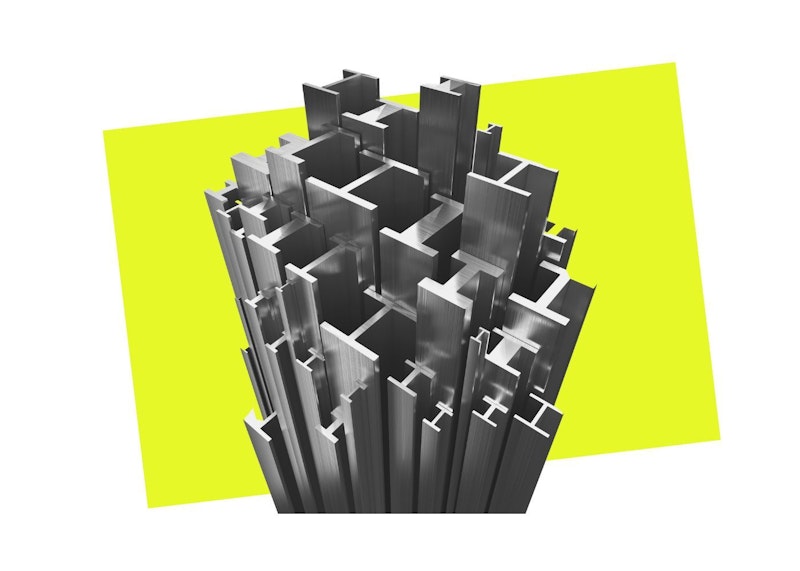
A major European steel firm fit for the future.
- Climate, regulatory and talent pressures are existential challenges to traditional steel supply chains.
- We sat down with every layer of the company, from tanker crew to CEO, to gain the honest insights needed.
- We ran a bespoke management team stress test based entirely on real-world scenarios.
- We mapped the forward-thinking roles and competencies the firm needs, for a concrete plan to bring its teams up to speed.
The steel production process is over 2,000 years old, using iron ore and coal as its basic ingredients. But times are drastically changing. For a major European steel manufacturer looking to modernise its shipping supply chain, the stakes are existential.
Arno Flier, strategy consultant at The Strategy Office, was brought in by a management team nudging 40 years of experience in the steel business. Guiding stakeholders to speak honestly (to themselves and others), he helped hone a vision of a firm fit for future purpose.
Uitdaging.
Positive regulatory progress has been made in Europe to limit the use of coal power in heavy industry, meaning the steel industry must adapt. Climate change precipitated this change, and is also responsible for another hurdle facing this client: lower water levels in a major European river. Its fleet of vast ships, transporting 16,000 tonnes of iron ore at a time, will no longer be usable as water levels continue to drop.
In parallel, it’s becoming increasingly tough for the client to hire technical talent to staff its shipping fleet. It’s dangerous and tough work, physically and mentally. The management team was also aware of its entrenchment in established ways of working, and somewhat fractious relationships.
So the steel manufacturer’s supply chain, hiring and management structure needed a major rethink:
Its current iron ore and coal shipping infrastructure is set to obsolesce. It needs to ship less coal, viably replacing this cargo.
It needs to decarbonise its transport modes, alongside investing in new shipping fleets adapted to lower river water levels.
It needs to attract and retain technical fleet talent.
Its management team must be willing and able to guide the company into its next iteration.
Arno couldn’t wait to get started.
Aanpak.
To change anything, the client first needed a clear vision of the future — followed by a strategy to get there.
What the management team had thought of as strategic drivers were, in fact, just a response to the multifaceted external challenges they faced. So, to grasp the changes required, Arno (and the client) needed clarity on the firm’s as-is situation: strengths, weaknesses, opportunities, constraints.
To lay these foundations, Arno worked through standard strategic analysis: management and personnel performance, competence maturity, fleet status, company culture, trust levels. This was an immediate value-add for the firm. However, it wasn’t just the desk-based approach you might expect. To get answers straight from the crew, Arno spent 48 hours onboard one of the client’s tankers.
Honest talk, from tanker crew to CEO
For Arno, truly engaging with the client meant sitting down to eat, then doing the dishes, with a tanker crew. Their backgrounds, perspectives, motivations and aspirations are, after all, key to understanding the client’s growing struggle to hire technical talent. Unfortunately but unsurprisingly, the firm and crew had never seen this hands-on effort from a consultant before.
Arno took a similarly no-nonsense approach to crack the management team’s dynamics. He guided them through situational simulations, applying family psychology techniques to the corporate environment. By physically positioning themselves in relation to their colleagues, the management team unpacked working relationships that had become sclerotic.
Tears were shed. Progress was made. To put it mildly, it was a different approach to what Arno had been confined to at Deloitte.
For trust, you need experience
None of these insights would have been possible without Arno’s maritime and industrial experience. His track record of work with global clients meant he wasn’t easily dismissed — the sad fate of many an external consultant.
His background was also an essential factor for all levels of the company working with his deliberately unorthodox style. Pouring time and effort into building relationships with the firm’s people, Arno created the trust needed for them to be receptive to his ideas.
A clear image of the firm’s future and leadership dynamics was a vital start. Living it out, however, remained a very different challenge.
The management team stress test
Arno developed a new working method he coined the management team stress test. In a nutshell: if 20 critical decision-making scenarios materialised in a day, how would they cope?
Arno devised a work pack detailing the scenarios, which the management team had to complete in 2 hours. They involved different people, many conflicted, and none were exercises for their own sake. Every scenario had happened over Arno’s 25 years in consulting.
The stress test revealed an interesting dynamic: once the client team had work packages, their skills and decades of experience guaranteed productivity and delivery. But before they reached that stage, they struggled to effectively divide the workload.
Faced with conflicting demands and scenarios, they weren’t practised at zooming out conceptually. Arno’s stress test handed them the rare opportunity to learn from simulations based on real events. Positioning demands and pressures within the wider company and market context, and spotting opportunities within (existential) challenges.
It hit home the high stakes of redefining the firm’s future trajectory, without artifice or exaggeration.
Impact.
From simulations to skillsets
Arno’s approach gave the management team a taste of the future. One they could build from to map the forward-thinking roles and competencies the firm needs, alongside a concrete plan to bring its team up to speed. Looking ahead, the client asked Arno to emulate his work with their team in another key European location.
Opportunities from the jaws of challenges
For Arno, one overall goal was to light the client’s way towards a major opportunity: utilising their shipping infrastructure to serve new needs in the evolving energy, industry and maritime sectors.
For this, Arno’s experience was everything. That’s standard practice at The Strategy Office — our consultants join us after decades in the game. Yet, somehow, they still manage not to take themselves too seriously.
